Papers by Elena Cruz Ruiz
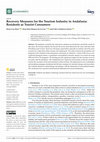
Economies, 2022
The pandemic caused by the coronavirus continues to test barriers around the world. In this sense... more The pandemic caused by the coronavirus continues to test barriers around the world. In this sense, the tourism industry has become the sector most affected by the crisis with more than 900 million euros in losses. Recovery will require a great effort, especially in countries where the sector
accounts for a large share of the economy and employment. This study analyzes the perceptions and proposals of the residents of the autonomous community of Andalusia. A total of 658 surveys were
conducted during the closure. A quantitative and qualitative thematic analysis was carried out using SPSS and NVivo Pro programs. The findings provide significant insights into the economic recovery
of society after the pandemic. The Andalusians have opted for local tourism so that the residents become the consumers of the tourist products of their territory. The deployment of new technologies
and marketing campaigns should provide the basic strategies for structural changes and innovations. The residents demand a united Europe and disagree with the statements of some political leaders.
The conclusions have practical and theoretical implications for tourist destinations.
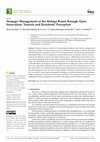
Journal Of Open innovation: Technology, Market, and Complexity, 2022
Territory brands are vehicles for transmitting the attributes that identify a geographical settin... more Territory brands are vehicles for transmitting the attributes that identify a geographical setting, they facilitate market positioning, and can contribute to generating an opinion that determines the promotion strategies of a place. The investment decisions of both private companies and in-stitutional bodies will be strengthened if residents and tourists’ perception is known, seeking to reconcile the interests of visitors and citizens with the aim of collaborating in the creation of the city’s tourism planning under the principles of sustainability, open innovation and co-creation of value.
The methodology used for this research focuses on an empirical study, for which a sample of 780 individuals was designed so that the Malaga brand was subjected to analysis with criteria of in-novative opportunity, applying constructs that were measured with existing and proven scales.
The results allow us to identify that the Malaga brand is being built and managed on the basis of the cultural projection of the city and its image attributes. The ratings of tourists and residents will serve as a basis for improving the management of Malaga as a tourist destination by the in-stitutions involved, taking into account the interest of open innovation. The conclusions of the research can be extrapolated to other geographical environments with similar levels of tourism development.

XII International Conference Of Tourim and Information& Communication Techonologies, 2018
Las nuevas tecnologías han supuesto un profundo cambio en numerosos sectores económicos, de hecho... more Las nuevas tecnologías han supuesto un profundo cambio en numerosos sectores económicos, de hecho, no ha sido un cambio concentrado en un único campo (Xiang, 2018). Ha supuesto una evolución y en cierto modo un revulsivo del sector turístico. Existen opiniones y percepciones desde todos los espectros de la población mundial. En algunos casos se piensa que existe un cierto rechazo a socializarse con nuevos aparatos e instrumentos (Marí, 1999) y ello, en parte, es debido a la rapidez con la que todo aparece y queda obsoleto. Desde otras instancias como por ejemplo, el marketing aplicado al sector, se reconoce que tanto la teoría como la práctica ha ido mutando porque así lo ha hecho el medio; por lo que el turista puede informarse e incluso pueden ver emisiones en directo sobre qué hacer en un destino, pueden leer opiniones y por qué no, contratar productos turísticos sin moverse de su domicilio (Rodríguez-Vázquez, 2009). Y esto no es todo, Internet nos ha desenmascarado recursos que se han convertido en productos y productos que han conformado nuevos destinos. El comportamiento del turista ha pasado a ser dinámico por lo que los bienes y servicios asociados precisan también de esa temporalidad (Campos et al., 2015).
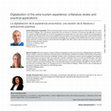
Doxa Comunicación. Revista interdisciplinar de Ciencias Sociales , 2021
Technological evolution coupled with the use of ICT technologies and other digital co... more Technological evolution coupled with the use of ICT technologies and other digital communication resources, such as virtual reality, augmented reality and 4D technology, is transforming the tourism experience cycle. Wine tourism must adapt in order for a wine tourism experience to be unforgettable and, therefore, recommended, so it must be innovative and multisensory. A bibliometric analysis has been carried out based on the scientific literature related to the digitalization of the wine tourism experience and the use of digital communication resources. A total of 72 academic papers were examined, with the result that producers can increase the value of the hedonic experience by bringing the winery closer to the customer before, during and after the visit. A successful experience throughout the whole process leads to positive E-WOM (digital word of mouth) and to the creation of a loyal brand community.
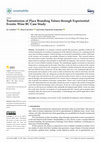
Sustainability, 2021
Sustainability is to promote economic growth that generates equitable wealth for all without harm... more Sustainability is to promote economic growth that generates equitable wealth for all without harming the environment, becoming one of the objectives that serve as a starting point for many place branding strategies. Cultural heritage, environmental sustainability, and the valorization of the territory are nowadays unavoidable elements to sustain brands. This research analyzes the transmission of place branding values through experiential events, as a formula for business improvement according to the principles of sustainable development. The research is focused on the case of wine in British Columbia (Canada). The methodology applied was based on a theoretical framework as a starting point for the study. From there, on the one hand, an analysis of the contents of the events carried out by the winegrowers of British Columbia during the harvest months in 2019 and 2020 has been carried out. On the other hand, interviews were conducted with relevant professionals and academics in the sector in order to determine the extent to which they meet the needs of promotion of the site, taking into account the impact on the sustainability of the territory. The results show the link between the events and the territory brand, which is a means to generate growth through wine tourism promoted by the wineries, thus revaluing the winegrowing landscape and, in general, the traditions of the place, among others. There is also a need to look for strategies that seek collaboration between the public and private sectors to improve the creation of integrated events that transmit the branding values of the place. Events are a tool to generate territory brandingand can, if well-conceived, contribute to the sustainable development goals (SDGs). In the case study, the results show that the vast majority of events organized by BC wineries aim to promote place branding within the framework of sustainability. A methodology that could be applicable to other territories and countries.
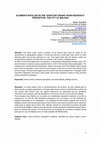
The brand might create a position of the territory that could be useful for the development of ge... more The brand might create a position of the territory that could be useful for the development of geographical spaces. It could also become a solid basis upon which to make decisions about the tourism planning of a city. This paper deals with the features, which are recognized by residents as those that are involved in the creation of Málaga brand. In order to achieve the goals set in this research, a descriptive methodology has been used. This study has been carried out using a questionnaire in which 1230 residents have participated. The findings have corroborated the hypotheses. Indeed, the results show that Málaga brand is being built under the concept of culture and that some places of the city are vital in the making of the territory image. This also encourages economic growth and hence employment. This paper offers important implications and tools to both public and private institutions insofar as they promote tourism promotion campaigns.
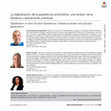
Doxa Comunicación. Revista Interdisciplinar de Estudios de Comunicación y Ciencias Sociales
La evolución tecnológica unida al uso de las tecnologías TICs y otros recursos de comunicación di... more La evolución tecnológica unida al uso de las tecnologías TICs y otros recursos de comunicación digitales como la realidad virtual, aumentada y la tecnología 4D están transformando el ciclo de la experiencia turística. El turismo del vino debe adaptarse para que una experiencia enoturística sea inolvidable y por lo tanto sea recomendada debe ser innovadora y multisensorial. Se ha realizado un análisis bibliométrico en base a la literatura científica en relación con la digitalización de la experiencia enoturística y el uso de los recursos de comunicación digital. Se examinaron un total de 72 documentos académicos que arrojan como resultado que los productores pueden incrementar el valor de la experiencia hedónica al acercar la bodega al cliente antes de realizar la visita, durante la misma y en la post-visita. Si la experiencia de todo el proceso es satisfactoria, se consigue un E-WOM (boca a boca digital) positivo y la creación de una comunidad de marca leal.
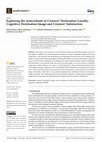
Mathematics, 2021
This study is one of the few of its kind that explores the individual impact of each of
the cogni... more This study is one of the few of its kind that explores the individual impact of each of
the cognitive attributes of a tourist destination’s image on cruisers’ destination loyalty and overall satisfaction. It also analyzes the mediating role of satisfaction between each of the attributes and loyalty. Variance-based structural equation modeling (PLS-SEM) was used for this analysis, based on a survey of 457 cruisers visiting the city of Malaga. The results confirm that three of the five attributes, the destination’s environment image, the perceived value image of services and the accessibility image have a direct influence on cruisers’ overall satisfaction, where environment image has the most significant impact. Moreover, the results support the mediating role of satisfaction in certain cases. There is total mediation between perceived value and loyalty, as well as between accessibility image and loyalty while there is only partial complementary mediation between environment image and loyalty. The confirmation that overall satisfaction influences loyalty enables management organizations to develop more efficient loyalty strategies for their respective destinations.
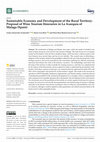
Economies, 2021
The certification of Malaga and Ronda wine route, within the model of certified wine routes in Sp... more The certification of Malaga and Ronda wine route, within the model of certified wine routes in Spain, has given a new boost to wine tourism in Malaga. The study focuses on La Axarquía, located on the Eastern Costa del Sol in Southern Spain, which has been a reference point in the wine business since ancient times and has its own identity. This research aims at elaborating a diagnosis of the territory related to the possibilities offered by the area, from the perspective of the heritage resources and services provided by the winemakers outlining two efficient enotourism itineraries that enhance the value of the territory’s resources. The methodology used starts with the study of the territory in order to profile the existing resources, a task that was complemented by the analysis of the documentary sources required in order to understand the peculiarities of the
territory. From there, a process of interviews was carried out between April and November 2019 with 100% of the winemakers and around 70% of the territory’s agents. The results of the research are specified in a SWOT (Strengths, Weaknesses, Opportunities, and Threats) analysis, which has allowed evaluating the possibilities of the enotourist development in La Axarquía, which is complemented with a proposal of two possible itineraries that will promote such development of the rural territory.
The conclusions convey the possibilities of the territory of a tourist segment which puts its resources to good use and moves forward the deseasonalization and destructuring of tourism in Malaga, especially on the Eastern Costa del Sol, according to criteria of efficiency and profitability with wine as a reference, although it could be applied to other gastronomic and cultural resources linked to the tourist sector in other geographical areas.
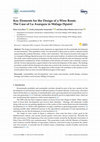
Sustaibinility, 2020
The design of enotourist routes represents an opportunity for the sustainable development of rura... more The design of enotourist routes represents an opportunity for the sustainable development of rural territories. This qualitative study was structured in three parts to reach a cohesion model representing the academic literature, visitors, and winemakers. This research focused on the region of La Axarquía in Málaga (Spain) because of its wine and tourist tradition. In relation to the methodology, this study used content analysis techniques for the analysis of both the relevant literature and the questionnaires completed by all the winemakers of the territory, 60 tourists who visited the wineries, and the 10 most representative agents linked to the tourist development of this region. The findings provided a model with the elements to be taken into account in the creation of a wine route or itinerary in any destination of the world. The application of this model will contribute to the creation of new tourist policies that can move towards efficient progress of the region.
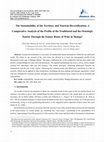
Journal of Business and Economics, 2020
Tourism diversification is a necessity for traditionally mature destinations within the sun and b... more Tourism diversification is a necessity for traditionally mature destinations within the sun and beach model. The choice in our research of the wine routes has allowed us to know the demographic profile of the Oenotourist in the case of Malaga (Spain). The main contribution lies in the comparison that has been made with tourists visiting Malaga for other motivations/reasons. The applied methodology has been a survey, whose sample reached 610 individuals (406 and 204 tourists). The results show/give interesting differences between the Oenotourists and the rest of the visitors. Observing the common points and differences contributes to a line of research, which can be applied to other destinations, facilitating decision-making and strategic approaches, which seek new formulas for economic growth, through a well-structured tourism sector, respect for the environment and sustainability.
Cuadernos de Turismo, 2020
The membership of Spain and Portugal to the European Union has encouraged cross-border cooperatio... more The membership of Spain and Portugal to the European Union has encouraged cross-border cooperation, promoting the diversification of the tourism in both sides of the Luso-Spanish border. Our analysis takes as a reference Duero/Douro region and the Douro River, this fluvial tourism has revalued cultural, wine and heritage tourism with water activities and cruises, reinforcing the existing tourist diversity. The resource management has allowed on both sides of the border, strengthen the tourism sector linked to the Douro and the Douro, intensifying in the last five years the fluvial activity, gathered around the wine tourism and the natural spaces.
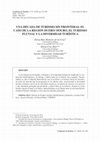
Cuadernos de Turismo, 2020
RESUMEN La incorporación de España y Portugal a la Comunidad Europea ha impulsado la coo-peración... more RESUMEN La incorporación de España y Portugal a la Comunidad Europea ha impulsado la coo-peración transfronteriza y el turismo a ambos lados de la frontera luso española. Nuestro análisis se ciñe a la Región Duero/Douro con el río Duero y el turismo fluvial de referente, un nicho de mercado que ha progresado en los últimos años, revalorizando la diversidad turística existente a través de las actividades acuáticas y el turismo de cruceros. Los recursos y una naturaleza protegida han permitido a ambos lados de la frontera, afianzar el sector turístico ligado al Duero y al Douro, intensificándose en el último lustro la actividad fluvial, reunida al turismo enológico y a los espacios naturales protegidos.
ABSTRACT The membership of Spain and Portugal to the European Union has encouraged cross-border cooperation, promoting the diversification of the tourism in both sides of the Luso-Spanish border. Our analysis takes as a reference Duero/Douro region and the Douro River, this fluvial tourism has revalued cultural, wine and heritage tourism with water activities and cruises, reinforcing the existing tourist diversity. The resource management has allowed on both sides of the border, strengthen the tourism sector linked to the Douro and the Douro, intensifying in the last five years the fluvial activity, gathered around the wine tourism and the natural spaces.
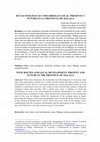
Las rutas enológicas estimulan el desarrollo local sostenible de zonas rurales, sus vínculos con ... more Las rutas enológicas estimulan el desarrollo local sostenible de zonas rurales, sus vínculos con el turismo gastronómico son una realidad y las opciones de que incidan en el turismo de calidad, dependerá de que como estén estructuradas. Málaga posee un gran potencial pues su tradición vinícola es bien conocida, sin embargo, solo funciona como ruta una subzona muy concreta, sin un hilo conductor que provea a Málaga de una ruta del vino global, en cuyo seno se encuentren las peculiaridades de cada una de sus demarcaciones territoriales vitivinicolas. Este documento trata de aportar un estudio, en el que se analice el turismo que gira en torno a la ruta del vino en Málaga, en el marco de las rutas existentes en España, concretando los rasgos del área geográfica tanto de la Ruta de las Bodegas y Vinos de la Serranía de Ronda, existente en la actualidad, como de la futura ruta de los vinos de Málaga, colaborando al desarrollo económico y al posicionamiento del territorio como clave de futuro para una ciudad que " tiene nombre de vino ". Palabras Clave: rutas enológicas, desarrollo territorio rural, vinos, Málaga, turismo enogastronomico
Wine routes stimulates the sustainable local development of rural areas, their links with gastronomic tourism are a reality and the options that affect quality tourism will depend on how they are structured. Malaga has a great potential because its wine tradition is well known, however, only works as route one particular subarea, without an conductive threat that provides with a global wine route to Malaga, in which the peculiarities of each of its wine-producing territorial demarcations are found. This document tries to contribute a study, which analyzes the tourism that revolves around the route of the wine in Malaga, within the framework of the existing routes in Spain, specifying the features of the actual geographical area of both the Route of the Wineries of the Serranía de Ronda and its wines, and of the future route of the Malaga wines, collaborating with the economic development and the positioning of the Territory as a key to the future for a city that is known to get a "wine name".
Revista TURyDES. Revista de Turismo y Desarrollo Local, 2015
La trayectoria de crecimiento del sector cruceros en la última década, es clave para entender el ... more La trayectoria de crecimiento del sector cruceros en la última década, es clave para entender el progreso de este segmento turístico. Este artículo analiza la evolución del turismo de cruceros en el mundo, atendiendo al cómputo total de tráfico de pasajeros y al ranking de principales puertos, observando la alta concentración del negocio en un conjunto reducido de países, en el que ya figura China como uno de los mercados emergentes más poderosos del sector. Las grandes áreas del turismo de cruceros se estudian en base a la oferta mundial de camas días entre 2004 y 2014 en las grandes áreas del mundo, atendiendo a las principales compañías navieras que operan a nivel mundial y en Europa.
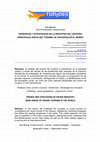
Revista TURyDES. Revista turismo y Desarrollo Local, 2015
Resumen: El análisis del turismo de cruceros lo abordamos en el presente trabajo, a través del es... more Resumen: El análisis del turismo de cruceros lo abordamos en el presente trabajo, a través del estudio de las tendencias más recientes de la industria, destacando las estrategias de marketing que siguen las principales compañías en el mundo. El comportamiento del mercado dará paso a la exposición de las grandes regiones crucerísticas, distinguiendo el Caribe y el Mediterráneo como las principales zonas, así como las otras regiones destacadas del turismo de cruceros a nivel internacional. Palabras Clave: turismo cruceros-tendencias-estrategias de mercados-marketing-áreas geográficas-organización sector Abstract: In this article, we challenge the analysis of cruise tourism by investigating the recent trends of the industry, highlighting marketing strategies that follow the leading companies in the world. The market behavior will give way to exposition of the major cruise regions, distinguishing the Caribbean and the Mediterranean as the main areas, as well as the other leading regions of cruise tourism at international level.
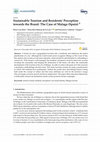
Sustaibinility, 2019
A brand can turn a geographical location into a landmark and influences the tourist planification... more A brand can turn a geographical location into a landmark and influences the tourist planification of a city. Although the world tourist sector recognizes Malaga as The Coast of Sun, this analysis also reveals several more elements, which should be substantiated if a rebranding is carried out. If the brand is well managed, the residents' perspective must be taken into account. Avoiding the seasonality and keeping the destination in the future will allow the sustainable development of the tourism in the city of Malaga. In order to achieve the goals set in this research, a descriptive methodology has been used. This study has been carried out using a questionnaire in which 1230 residents have participated. Indeed, the results show that Malaga brand is being built under the concept of culture and that some attributes are vital for the territory's image. This encourages economic growth and hence employment. This paper offers important implications to both public and private institutions insofar as they promote tourism campaigns.
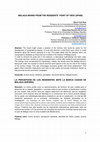
OTIE_International Conference on Islands Tourism 2018, 2018
The brand might create a position of the territory that could be useful for the development of ge... more The brand might create a position of the territory that could be useful for the development of geographical spaces. It oculd also become a solid basis upon which to make decisions about the tourism planning of a city. This paper deals with the features which are recognised by residents as those that are involved in the creation of Málaga brand. In order to achieve the goals set in this research, a descriptive methodology has been used. This study has been carried out using a questionnaire in which 200 residents have participated. The findings have corroborated the hypotheses. Indeed, the results show that Malaga brand is being built under the concept of culture and that some places of the city are vital in the making of the territory image. This also encourages economic growth and hence employment. This paper offers important implications and tolos to both public and private institutions insofar as they promote tourism promotion campaigns. Resumen: La marca puede crear un posicionamiento del territorio de gran utilidad para el desarrollo de un espacio geográfico y una base sobre la que construir la planificación turística de una ciudad. Este artículo tiene por objetivo determinar los elementos que los residentes reconocen como factores clave de identidad en la construcción de la marca territorio Málaga. Se ha usado una metodología descriptiva mediante el uso de un cuestionario. Un total de 202 residentes participaron en la encuesta, verificándose las hipótesis planteadas en la investigación. Los hallazgos de este estudio sugieren que la marca Málaga se está construyendo bajo el prisma de la cultura y que ciertos enclaves de la ciudad son vitales para la imagen de la misma. Ello, además, favorece el crecimiento económico del tejido empresarial de Málaga. Creemos que este estudio nos da importantes implicaciones gerenciales, para las instituciones locales, a fin de promover las campañas de promoción turísticas futuras tanto para el caso de Málaga como en otras ciudades del Mediterráneo. Palabras clave: marca territorio, percepción residente, identidad de marca ciudad, turismo Málaga.
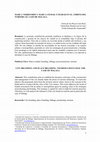
La presente contribución pretende establecer la dinámica y la lógica de la construcción y gestió... more La presente contribución pretende establecer la dinámica y la lógica de la construcción y gestión de las marcas de ciudad en la actualidad, bajo el prisma del marketing turistico. Para ello se realiza un recorrido desde el ámbito del territorio y sus valores, hasta descender al concepto de marca y su imbricación con las ciudades del siglo XXI. En este trabajo se aborda las necesidades de las marcas asociadas a un espacio urbano o metropolitano, poniendo en valor las estrategias de posicionamiento y brandig. Esta estrategia es de capital importancia para que las ciudades compitan por el turismo. Por ello, analizaremos la influencia de la marca ciudad sobre el turismo y en especial se abordará el caso de Málaga.
This contribution aims to establish the dynamics and logic of the construction and management of the city brands under the prism of tourism marketing. To reach this objetive the propousak starts from the territory and its values, down to the concept of the brand and its overlap with the cities of the 21st century. This work addresses the needs of brands associated with an urban or metropolitan space by putting value in the strategies of positioning and brandig. This strategy is capital for cities to fight for tourism atraction. Therefore we will analyze the influence of the city brand on tourism and in particular the case of Malaga.
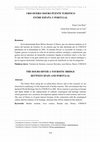
International Journal of Scientific Management and Tourism, 2018
En la denominada Raya Ibérica discurre el Duero, que nos interesa analizar en el marco del turis... more En la denominada Raya Ibérica discurre el Duero, que nos interesa analizar en el marco del turismo de frontera. Es un entorno que ha sido declarado por la UNESCO patrimonio de la humanidad en 2001. El turismo fluvial va creciendo en Europa y en España, gracias a la puesta en valor de un turismo cultural, enológico y patrimonial, que genera nuevas opciones de desarrollo económico ligadas al territorio rural y a los ríos. El caso del Duero es de gran interés por el vínculo que tiene con la cultura enológica y por la riqueza patrimonial, elementos que se ponen de manifiesto en esta investigación.
The Douro flows along the so-called Raya Ibérica and in this research we are interested in analysing it in the framework of border tourism. This environment that was declared World Heritage Site by UNESCO in 2001. River tourism is growing in Europe and Spain thanks to the enhancement of cultural, oenological and heritage tourism, which generates new economic development options linked to rural territory and rivers. The case of Douro is of great interest because of the connection with the oenological culture and the richness of its heritage, elements that will be studied in this analysis.











Uploads
Papers by Elena Cruz Ruiz
accounts for a large share of the economy and employment. This study analyzes the perceptions and proposals of the residents of the autonomous community of Andalusia. A total of 658 surveys were
conducted during the closure. A quantitative and qualitative thematic analysis was carried out using SPSS and NVivo Pro programs. The findings provide significant insights into the economic recovery
of society after the pandemic. The Andalusians have opted for local tourism so that the residents become the consumers of the tourist products of their territory. The deployment of new technologies
and marketing campaigns should provide the basic strategies for structural changes and innovations. The residents demand a united Europe and disagree with the statements of some political leaders.
The conclusions have practical and theoretical implications for tourist destinations.
The methodology used for this research focuses on an empirical study, for which a sample of 780 individuals was designed so that the Malaga brand was subjected to analysis with criteria of in-novative opportunity, applying constructs that were measured with existing and proven scales.
The results allow us to identify that the Malaga brand is being built and managed on the basis of the cultural projection of the city and its image attributes. The ratings of tourists and residents will serve as a basis for improving the management of Malaga as a tourist destination by the in-stitutions involved, taking into account the interest of open innovation. The conclusions of the research can be extrapolated to other geographical environments with similar levels of tourism development.
the cognitive attributes of a tourist destination’s image on cruisers’ destination loyalty and overall satisfaction. It also analyzes the mediating role of satisfaction between each of the attributes and loyalty. Variance-based structural equation modeling (PLS-SEM) was used for this analysis, based on a survey of 457 cruisers visiting the city of Malaga. The results confirm that three of the five attributes, the destination’s environment image, the perceived value image of services and the accessibility image have a direct influence on cruisers’ overall satisfaction, where environment image has the most significant impact. Moreover, the results support the mediating role of satisfaction in certain cases. There is total mediation between perceived value and loyalty, as well as between accessibility image and loyalty while there is only partial complementary mediation between environment image and loyalty. The confirmation that overall satisfaction influences loyalty enables management organizations to develop more efficient loyalty strategies for their respective destinations.
territory. From there, a process of interviews was carried out between April and November 2019 with 100% of the winemakers and around 70% of the territory’s agents. The results of the research are specified in a SWOT (Strengths, Weaknesses, Opportunities, and Threats) analysis, which has allowed evaluating the possibilities of the enotourist development in La Axarquía, which is complemented with a proposal of two possible itineraries that will promote such development of the rural territory.
The conclusions convey the possibilities of the territory of a tourist segment which puts its resources to good use and moves forward the deseasonalization and destructuring of tourism in Malaga, especially on the Eastern Costa del Sol, according to criteria of efficiency and profitability with wine as a reference, although it could be applied to other gastronomic and cultural resources linked to the tourist sector in other geographical areas.
ABSTRACT The membership of Spain and Portugal to the European Union has encouraged cross-border cooperation, promoting the diversification of the tourism in both sides of the Luso-Spanish border. Our analysis takes as a reference Duero/Douro region and the Douro River, this fluvial tourism has revalued cultural, wine and heritage tourism with water activities and cruises, reinforcing the existing tourist diversity. The resource management has allowed on both sides of the border, strengthen the tourism sector linked to the Douro and the Douro, intensifying in the last five years the fluvial activity, gathered around the wine tourism and the natural spaces.
Wine routes stimulates the sustainable local development of rural areas, their links with gastronomic tourism are a reality and the options that affect quality tourism will depend on how they are structured. Malaga has a great potential because its wine tradition is well known, however, only works as route one particular subarea, without an conductive threat that provides with a global wine route to Malaga, in which the peculiarities of each of its wine-producing territorial demarcations are found. This document tries to contribute a study, which analyzes the tourism that revolves around the route of the wine in Malaga, within the framework of the existing routes in Spain, specifying the features of the actual geographical area of both the Route of the Wineries of the Serranía de Ronda and its wines, and of the future route of the Malaga wines, collaborating with the economic development and the positioning of the Territory as a key to the future for a city that is known to get a "wine name".
This contribution aims to establish the dynamics and logic of the construction and management of the city brands under the prism of tourism marketing. To reach this objetive the propousak starts from the territory and its values, down to the concept of the brand and its overlap with the cities of the 21st century. This work addresses the needs of brands associated with an urban or metropolitan space by putting value in the strategies of positioning and brandig. This strategy is capital for cities to fight for tourism atraction. Therefore we will analyze the influence of the city brand on tourism and in particular the case of Malaga.
The Douro flows along the so-called Raya Ibérica and in this research we are interested in analysing it in the framework of border tourism. This environment that was declared World Heritage Site by UNESCO in 2001. River tourism is growing in Europe and Spain thanks to the enhancement of cultural, oenological and heritage tourism, which generates new economic development options linked to rural territory and rivers. The case of Douro is of great interest because of the connection with the oenological culture and the richness of its heritage, elements that will be studied in this analysis.
accounts for a large share of the economy and employment. This study analyzes the perceptions and proposals of the residents of the autonomous community of Andalusia. A total of 658 surveys were
conducted during the closure. A quantitative and qualitative thematic analysis was carried out using SPSS and NVivo Pro programs. The findings provide significant insights into the economic recovery
of society after the pandemic. The Andalusians have opted for local tourism so that the residents become the consumers of the tourist products of their territory. The deployment of new technologies
and marketing campaigns should provide the basic strategies for structural changes and innovations. The residents demand a united Europe and disagree with the statements of some political leaders.
The conclusions have practical and theoretical implications for tourist destinations.
The methodology used for this research focuses on an empirical study, for which a sample of 780 individuals was designed so that the Malaga brand was subjected to analysis with criteria of in-novative opportunity, applying constructs that were measured with existing and proven scales.
The results allow us to identify that the Malaga brand is being built and managed on the basis of the cultural projection of the city and its image attributes. The ratings of tourists and residents will serve as a basis for improving the management of Malaga as a tourist destination by the in-stitutions involved, taking into account the interest of open innovation. The conclusions of the research can be extrapolated to other geographical environments with similar levels of tourism development.
the cognitive attributes of a tourist destination’s image on cruisers’ destination loyalty and overall satisfaction. It also analyzes the mediating role of satisfaction between each of the attributes and loyalty. Variance-based structural equation modeling (PLS-SEM) was used for this analysis, based on a survey of 457 cruisers visiting the city of Malaga. The results confirm that three of the five attributes, the destination’s environment image, the perceived value image of services and the accessibility image have a direct influence on cruisers’ overall satisfaction, where environment image has the most significant impact. Moreover, the results support the mediating role of satisfaction in certain cases. There is total mediation between perceived value and loyalty, as well as between accessibility image and loyalty while there is only partial complementary mediation between environment image and loyalty. The confirmation that overall satisfaction influences loyalty enables management organizations to develop more efficient loyalty strategies for their respective destinations.
territory. From there, a process of interviews was carried out between April and November 2019 with 100% of the winemakers and around 70% of the territory’s agents. The results of the research are specified in a SWOT (Strengths, Weaknesses, Opportunities, and Threats) analysis, which has allowed evaluating the possibilities of the enotourist development in La Axarquía, which is complemented with a proposal of two possible itineraries that will promote such development of the rural territory.
The conclusions convey the possibilities of the territory of a tourist segment which puts its resources to good use and moves forward the deseasonalization and destructuring of tourism in Malaga, especially on the Eastern Costa del Sol, according to criteria of efficiency and profitability with wine as a reference, although it could be applied to other gastronomic and cultural resources linked to the tourist sector in other geographical areas.
ABSTRACT The membership of Spain and Portugal to the European Union has encouraged cross-border cooperation, promoting the diversification of the tourism in both sides of the Luso-Spanish border. Our analysis takes as a reference Duero/Douro region and the Douro River, this fluvial tourism has revalued cultural, wine and heritage tourism with water activities and cruises, reinforcing the existing tourist diversity. The resource management has allowed on both sides of the border, strengthen the tourism sector linked to the Douro and the Douro, intensifying in the last five years the fluvial activity, gathered around the wine tourism and the natural spaces.
Wine routes stimulates the sustainable local development of rural areas, their links with gastronomic tourism are a reality and the options that affect quality tourism will depend on how they are structured. Malaga has a great potential because its wine tradition is well known, however, only works as route one particular subarea, without an conductive threat that provides with a global wine route to Malaga, in which the peculiarities of each of its wine-producing territorial demarcations are found. This document tries to contribute a study, which analyzes the tourism that revolves around the route of the wine in Malaga, within the framework of the existing routes in Spain, specifying the features of the actual geographical area of both the Route of the Wineries of the Serranía de Ronda and its wines, and of the future route of the Malaga wines, collaborating with the economic development and the positioning of the Territory as a key to the future for a city that is known to get a "wine name".
This contribution aims to establish the dynamics and logic of the construction and management of the city brands under the prism of tourism marketing. To reach this objetive the propousak starts from the territory and its values, down to the concept of the brand and its overlap with the cities of the 21st century. This work addresses the needs of brands associated with an urban or metropolitan space by putting value in the strategies of positioning and brandig. This strategy is capital for cities to fight for tourism atraction. Therefore we will analyze the influence of the city brand on tourism and in particular the case of Malaga.
The Douro flows along the so-called Raya Ibérica and in this research we are interested in analysing it in the framework of border tourism. This environment that was declared World Heritage Site by UNESCO in 2001. River tourism is growing in Europe and Spain thanks to the enhancement of cultural, oenological and heritage tourism, which generates new economic development options linked to rural territory and rivers. The case of Douro is of great interest because of the connection with the oenological culture and the richness of its heritage, elements that will be studied in this analysis.
La tradicional oferta de sol y de playa ha ido ampliándose, Málaga ya no es conocida sólo por la bondad de su clima, pues la oferta cultural, gastronómica y un conjunto de atractivos, son explotados a través de excelentes campañas de marketing, que llevan el nombre de la ciudad a muy diversos lugares del mundo.
El turismo de cruceros va a constituirse en uno de los elementos que servirán al desarrollo a la ciudad y lo hará teniendo como referencia al “nuevo puerto de Málaga”, permitiendo esta investigación un mejor conocimiento del funcionamiento de este segmento turístico y ello podrá ser una buena base, sobre la que actuar las instituciones públicas en beneficio de su progreso.
El puerto de Málaga se ha replanteado en los últimos años su política comercial, para ello ha sido necesario acometer importantes obras de infraestructuras. En los años setenta se iniciaron los trabajos de remodelación y ensanche de los muelles, llevándose a cabo obras que cambiaron su fisonomía, entre ellas, citar la construcción de un atracadero adosado al dique de Levante para grandes cruceros, que permitiría ampliar la proyección turística de la ciudad de Málaga.
Y es precisamente en la última década cuando el turismo de cruceros va adquiriendo una semblanza, acorde con los tiempos más modernos, pasándose del turismo de cruceros selectivo y elitista, a un turismo de cruceros de masas, al alcance de todos.
La industria del crucero es el sector que ha registrado el mayor crecimiento en el mercado turístico a nivel mundial, entendemos que ello es razón más que suficiente que justifica su estudio, sobre todo, si tenemos en cuenta la escasez de investigaciones y publicaciones en España sobre el turismo de cruceros.
Y en la medida que Málaga se está convirtiendo en referencia a nivel nacional y es conocida más allá del contexto de la Comunidad Europea, es interesante analizar su situación de partida, para poder vislumbrar hacia dónde camina y cuál es el lugar que ostenta hoy en día en el ranking nacional e internacional.
La investigación es compleja pues es un sector donde interesa la coyuntura más reciente, en un entorno que cambia a una gran velocidad, por lo que prestaremos una especial atención a los datos que aportan las grandes asociaciones del sector, en un afán de que este trabajo pueda ser útil, a quienes deben tomar decisiones para mejorar la economía de Málaga.
Siguiendo la semblanza de trabajos empíricos vinculados al negocio de los cruceros, se ha planteado un modelo que relacionará las variables imagen del destino, satisfacción del crucerista y la lealtad al destino, como fórmula de aproximación al mejor conocimiento del sector en el puerto de Málaga, para ello hemos formulado un conjunto de objetivos, que se enmarcan a su vez en las distintas partes que presenta esta investigación.
El tratamiento de esta cuestión se aborda en un conjunto de capítulos, que van desde la conceptualización de las denominaciones de origen y las indicaciones de procedencia, a una profunda y exhaustiva revisión de la literatura académica, que en este caso cobra un valor adicional, en los campos de estudios ceñidos a los perfiles investigadores de los autores.
El largo camino normativo que ha sido aplicado a estas figuras normativas en España, han llevado a los profesores a cuestionarse si el fomento de las denominaciones de origen, como marcas colectivas de garantía, no habrá frenado las marcas individuales, que sirven a las empresas para distinguir sus caldos de calidad.
Finalmente, en su último capítulo se analizan las indicaciones geográficas en España y en Europa, en el que se concretan los avances en la regulación del sector vinícola en España, sin olvidar los autores de dedicar un espacio en el texto, a lo que consideran tendencia de “última generación”, tratando la trayectoria de los vinos de calidad, el desarrollo del territorio rural y los vinos ecológicos.
Las conclusiones y las reflexiones que se plantean son en sí mismas una excelente aportación, si bien, por la misma estructura de la investigación, la bibliografía se ha convertido en otro valor añadido del estudio, no por exhaustiva, que lo es, sino por la oportunidad que representa la recopilación de los principales trabajos, en un tiempo tan dilatado de análisis y desde diversas perspectivas.
otro lado, facilitar a través de nuevos recursos didácticos, como el cine, la comprensión de las materias utilizando un recurso cercano, visual y estimulante que permite observar al mundo, a través del prisma de las asignaturas de la Historia Económica y de Funda-mentos de Marketing, con una orientación novedosa y eficiente.
En este estudio se trabaja una visión transversal y multidisciplinar de los contenidos concomitantes de las materias implicadas, desde un enfoque más plural al implicar diferentes materias, con una metodología que analiza los modelos de comunicación que pueden aplicarse, adaptándolos a nuestra investigación, otorgándoles una especial relevancia a la figura del mediador docente y experto en la materia. Además, se ha utilizado el método de encuesta, cuyos resultados debidamente escrutados, muestran el perfil del
alumno, el interés del cine como elemento de innovación docente y la importancia que tiene en el proceso de comunicación, la figura del profesor como portavoz de unos conocimientos y también como elemento dinamizador del proceso educativo.
Resumen
El turismo de masas en España se convirtió en uno de los sectores económicos más prósperos a mediados del siglo XX, colaborando al proceso de convergencia con Europa, utilizando el poder seductor de los medios de comunicación, especialmente del cine. Se ha seguido una metodología de análisis cuantitativo y en menor medida cualitativo. Tras la revisión de la literatura académica, se consultaron los registros de la Filmoteca Nacional, seleccionando 87 películas de contenido turístico y de producción nacional, durante el período de vigencia del Ministerio de Información y Turismo (1951- 1977). Los resultados han permitido identificar los segmentos turísticos, los géneros cinematográficos, la tipología de turistas, nacionales o extranjeros, así como los elementos patrimoniales y los servicios presentes en el producto turístico de la época, visualizando los escenarios donde se desarrollan las tramas de las películas. La cinematografía permite mostrar los elementos que constituyen el modelo económico turístico de la España franquista, centrado en localidades del litoral mediterráneo, especialmente en la Costa del Sol. La investigación traslada los antecedentes del marketing turístico, utilizando el cine como un medio de comunicación, que reconoce la transformación económica de la sociedad española y la nueva imagen de España que se quiere proyectar en el extranjero.
Palabras clave